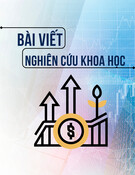
The impact of time management on the success of service
organizations
Wiam Wahab Abdel-Hussein
Southern Technical University - Technical Institute / Nasiriya
WiamAl.yasiri@stu.edu.iq
Abstract. This study aims to identify the effect of time management on the success of service
organizations, in order to proceed with the goals that follow this study and find the relationship
and influence the dimensions of each of the two variables, which is the first variable time
management after the researcher chose the two methods of organization and management of
goals, while the second variable was service organizations Which includes organizational
performance and creative leadership, as the researcher used the descriptive approach after
conducting the field study.
Keywords. time management, service goals, organization
1. Research problem
The research problem is concerned with attention to knowing the impact of time
management, which is one of the most important influences within governmental and non-
governmental institutions and organizations, because time management is one of the
foundations through which organizations of all kinds can advance, because time management
is one of the requirements upon which the success strategy of those institutions and access is
built To administrative creativity within those service institutions that are trying to search for
faster and more accurate ways of working to develop the capabilities of organizations and their
development, so this problem raises a major question characterized by the following:
- What is the impact of time management on the success of service organizations?
With this question, several questions are branched out, including:
- What are the methods in time to achieve the success of service organizations?
- Is time management important to the success of service organizations?
- Do you address goals on how to use time wisely in order to arrive at good planning for
the success of service organizations?
2. Research hypotheses
“There is a statistically significant correlation between time management and service
goals achievement at the significance level (0,05).”
249
Technium Social Sciences Journal
Vol. 5, 249-255, March 2020
ISSN: 2668-7798
www.techniumscience.com

3. The importance of research
The importance of research is to understand and study the two variables according to
the impact of time management on the success of service organizations, and what are the most
important methods that can meet the aspiration of success for these organizations, since the
most important goals that the service organization sets is to reach how to manage the goals of
the organization, and then understand How to independently organize time to reach success.
Fourth: Research objectives
- Knowledge of time management methods that meet the aspiration of success in service
organizations.
- Knowing how to organize time with the service organization and how to manage its
work.
- 3- Understand the goals that the time factor puts in managing the performance of service
organizations.
Theoretical
Time is an important factor which means in its management the rationalization of
behavior, and the use of available methods, capabilities and capabilities to achieve the goal
required to be accomplished on time, and in terms of motivation, one of the important forces in
the system of character building, motivating behavior and directing towards a specific
viewpoint (Al-Dhahir, 2013: 9)
Also, the importance of sustenance aims at good organization that can bring the
attributes that give importance to time in organizing, according to the tendency to great
cooperation between members of the group and a sense of collective responsibility, as well as
organizing work across members of the group. (Al-Ajmi, 2010: 305).
Solving many important problems that the organization may encounter listening to all
the specialists in it who have a direct relationship with decision-making requires clearing the
importance of time in managing the success of service organizations, because time management
works to achieve a set of important goals, including: (Al-Sarn, 2018: 124-125)
- Full cooperation between the top management and other executive departments in the
organization in order to discuss work problems, discuss negativity and work on continuous
development and improvement throughout the organization.
- Detailed study of the topics raised, familiarity with the necessary details of current
problems, and listening to different perspectives on all aspects of the topic.
- Take advantage of the expertise of specialists and consultants by listening to the
technical point of view of each of them, and the process as well, the more experience, the
more optimization of time will be achieved.
- Decision-making unanimously and in a democratic manner that enables those involved
in implementation and serious participation in its performance.
- Providing an opportunity to train and prepare young leaders for the future.
- Achieving the collective leadership of the organization so that those responsible for
work extend the organization's basic goals.
The relationship indicates that effective time management requires the manager to
follow his duties and respect them with high accuracy when dealing with time for the success
of the service organization's work, and indicates this through the following: - (Al-Alaq, 2009:
58-62)
250
Technium Social Sciences Journal
Vol. 5, 249-255, March 2020
ISSN: 2668-7798
www.techniumscience.com

1- Planning: It is an administrative function that includes choosing among a number
of alternatives the organization's goals, policies, plans and programs necessary to achieve the
goals, and it is a decision-making process because it involves choosing between alternatives.
2- Organization: The organization involves creating a deliberate structure for the roles
by distinguishing and defining the activities necessary to achieve the goals of the organization
and each part of it, grouping these activities and allocating a director to each group of these
activities, delegating authority to carry out these activities, and providing coordination of the
authority's relationships horizontally and vertically in the organizational structure, and the
director at His commencement of the organizational function taking into account the following
organizational limitations:
▪ Work and specialty assessment.
▪ Presidential hierarchy and career relations process.
▪ The organizational structure of job design and organizational unit design.
▪ The scope of supervision and job headquarters.
▪ Informal organization.
▪ Centers and roles for each individual.
▪ The intellectual climate that is related to communications in order to achieve the required
coordination effectively.
▪ Centralization and decentralization.
▪ Powers, Delegations and Responsibilities.
3- Formation: It means the development of the administrative body, i.e. placing the
administrators in the various centers among which the structure of the organization, and then
the job necessitates the necessity of specifying the specifications and requirements for every
person in charge of a particular position, with the evaluation, selection, and training of
candidates.
4- Guidance: The actual initiation of the required operations requires another
administrative step, which is to direct individuals and groups through administrative orders,
instructions, regulations, communications and leadership oversight of work towards the
implementation of operations previously distributed to individuals or groups represented in
departments and divisions, and the guidance function It takes place in the light of several
considerations, including the naturalness of the individuals or departments assigned to work,
the type of work required, as well as the director's assessment and judgment on the course of
matters.
5- Oversight: Oversight is the verification that everything is in progress according to
the plans laid down, issued instructions and prescribed principles that aim to reveal weaknesses
and errors of corrections and prevent them from recurring, which are practiced on everything,
as it is a vital component of management that contributes to ensuring proper achievement To
work by the efforts of other individuals, and you verify that the work to be performed has been
performed satisfactorily.
The success of service organizations
A service organization: A group that contains individuals who are responsible for
performing a range of skills and functions related to the process of product flow from producers
to customers in the target markets (Al-Zmour, 2006: 22).
The success of the organizations is nothing but an administrative problem resulting
from the difference of researchers in their awareness of this concept and the extent of their
personal interest in organizational changes without the other, as a result of their intellectual and
personal bias to the values of others. (Al-Rikabi, 1999: 133)
251
Technium Social Sciences Journal
Vol. 5, 249-255, March 2020
ISSN: 2668-7798
www.techniumscience.com

Thus, the service organization depends on the distribution of the commodity, as the distribution
among the organizations is a group of activities that start by entering the commodity in its use
form to the commercial store, and until the consumer receives it, and thus the service
organizations are disciplined in terms of time and how to manage it fully. (211, Proctor )
Thus, the vision of organizational success becomes clear as the organization's ability to survive,
adapt, and grow in light of the goals it seeks to achieve, which leads to the effective strategic
alignment that these organizations aim to achieve success (Dell & Kramer, 2003; 1)
Organizational performance
The concept of performance comes as the achievement of organizational goals by
using resources efficiently and effectively, and so the outputs are what the system seeks to
achieve, that is, it works to link the aspects of activity and the goals that these activities seek to
achieve within the organization. (Speech, 2001: 11).
Creative leadership
Leadership is nothing more than creating a vision that is successful, concerned with
formulating the goal by proving strategies that achieve the spirit of cooperation, since the leader
who prioritizes the formulation of successful future visions must have a spirit of creativity and
work to take things with legitimate interests that satisfy all parties, while He may be able to
succeed after arriving at a strategy through which his ideas are invigorated, by participating in
setting the right and right goals. (Ali Lounis, Dalal Jaghyoub, 2013: 23)
So leadership is the process that is influential by a leader in his subordinates to persuade them
and urge them to actively contribute to their efforts to undertake collaborative activity. (Naeem,
2005: 44)
While the leadership has a leader who must be creative in mastering his work for the
success of the organization, through the method offered by the leader in his work and who
possesses these capabilities and experiences to foresee the future, forecast future needs, and
work diligently to present challenges for preparation in advance and tasks that are in the
priorities of his tasks, As the leader works with every activity and activity to achieve the goals
with a specific time and evaluate his work in a timely manner (Noah, Abdel Aziz, 2011: 87)
Practical
For the purpose of testing the research hypotheses, a survey form was prepared for the
opinions of employees in the directorate of Dhi-Qar Municipalities who have a direct contact
with the reality of accounting and supervisory work in a manner that achieves the objective of
the form, as the results of the graphical analysis of the research sample were as follows:
Table (1) The total number of the research sample
Excluded
Right
The total number of distributed
forms
details
15
47
62
the
number
24%
76%
100%
percentage
Table (2) Reliability Statistics
Cronbach's Alpha
N of Items
.775
12
252
Technium Social Sciences Journal
Vol. 5, 249-255, March 2020
ISSN: 2668-7798
www.techniumscience.com

Table (3)Case Processing Summary
Cases
Included
Excluded
Total
N
Percent
N
Percent
N
Percent
Time management
Achieve goals
47
100.0%
0
0.0%
47
100.0%
Table (4)Correlations
Time
management
Achieve goals
Time management
Pearson Correlation
1
.706**
Sig. (2-tailed)
.000
N
47
47
Achieve goals
Pearson Correlation
.706**
1
Sig. (2-tailed)
.000
N
47
47
**. Correlation is significant at the 0.01 level (2-tailed).
The cognitive scale of the research sample: The cognitive scale: is a transformation of
the weighted averages in the Likart scale by adding the product of the sample choices multiplied
by the weighted weight divided by the number of the sample, which shows the extent of
knowledge that the research sample has for the paragraph that was answered and the more the
scale exceeds 2 whenever The knowledge of the sample increased.
scale
STD.
MEAN
Paragraph : Time management
agree
667 .
2.47
I am facing some difficulties in lack of time
1
agree
712 .
2.4
I can organize time to do all the work
2
agree
522 .
2.66
I always distribute works according to the estimated time
management
3
agree
414 .
2.79
It's easy to control my time
4
agree
655 .
2.49
Take the time to complete the necessary and necessary
actions first and then unnecessary.
5
agree
375 .
2.89
I rarely encounter obstacles that take a lot of time to do
my job.
6
scale
STD.
MEAN
Paragraph : Achieve goals
agree
204 .
2.96
I always set goals for achieving it
1
agree
351 .
2.91
I lay out all possibilities for achieving business goals
2
agree
0.0
3
I always have time to achieve my goals
3
agree
775 .
2.55
I lay out the methods and methods that lead me to achieve
my goals
4
agree
282 .
2.912
Share subordinates with me to consult on achieving goals
5
agree
433 .
2.83
I can take the time to manage and reach my goals.
6
253
Technium Social Sciences Journal
Vol. 5, 249-255, March 2020
ISSN: 2668-7798
www.techniumscience.com


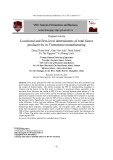
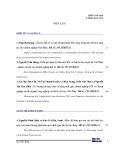
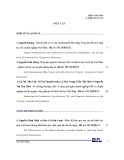

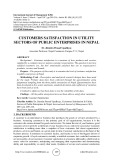

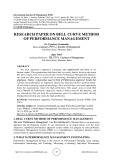


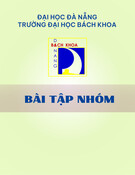
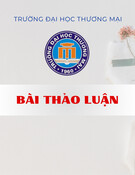






![20 câu hỏi Quản lý dự án phần mềm có đáp án [mới nhất]](https://cdn.tailieu.vn/images/document/thumbnail/2025/20251003/hieu2004haha@gmail.com/135x160/78791759734259.jpg)


![Tài liệu Quản lý dự án: Kiến thức nền tảng toàn diện [chuẩn SEO]](https://cdn.tailieu.vn/images/document/thumbnail/2025/20250910/kimphuong1001/135x160/92631757496585.jpg)


